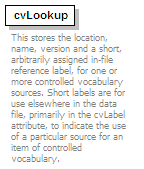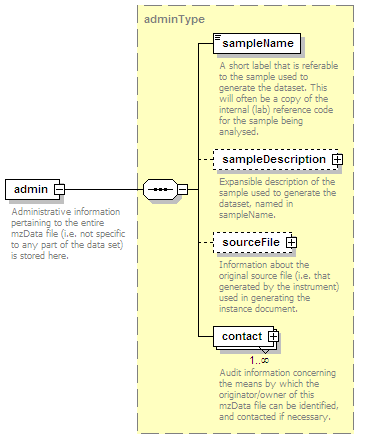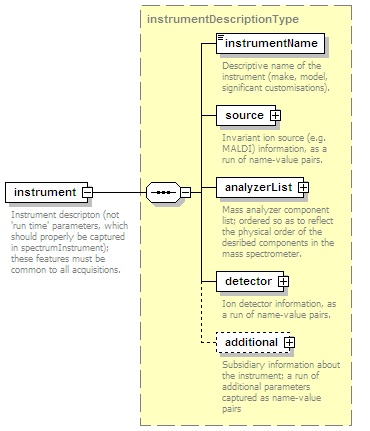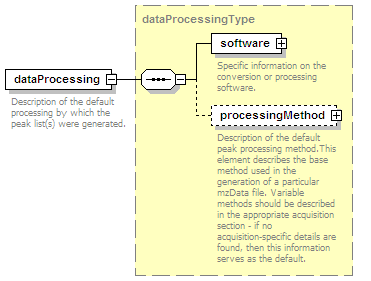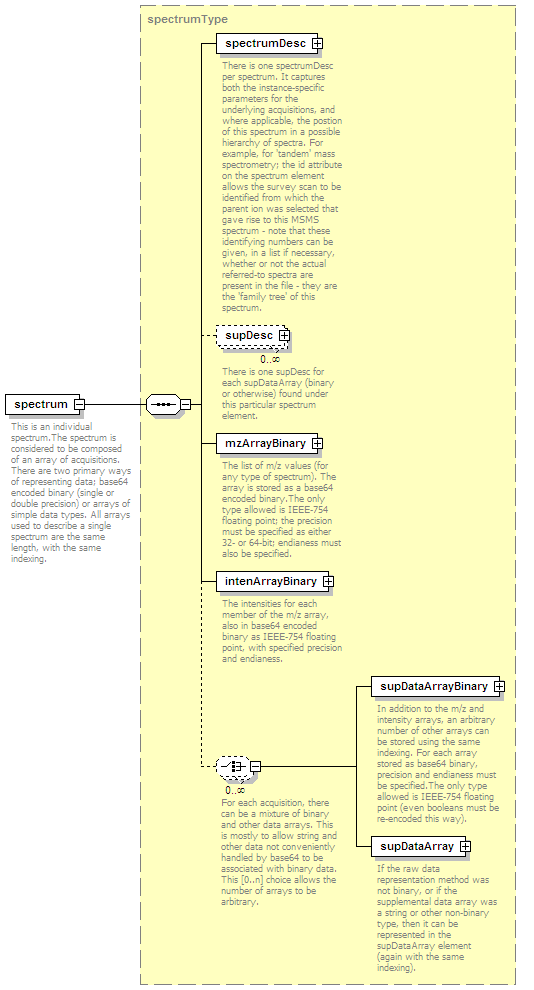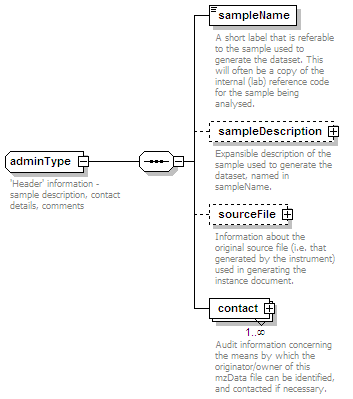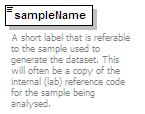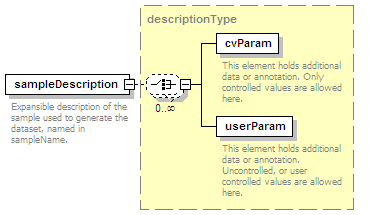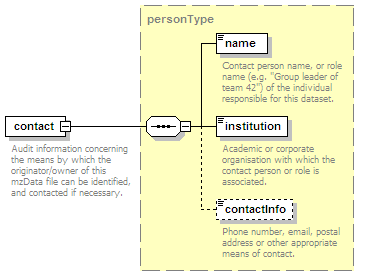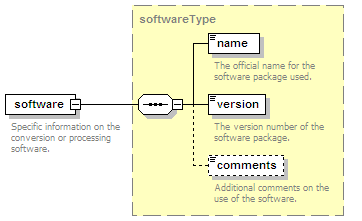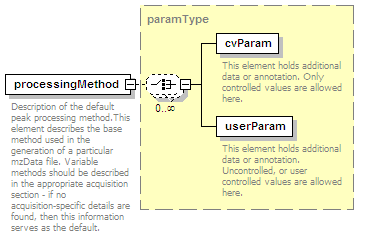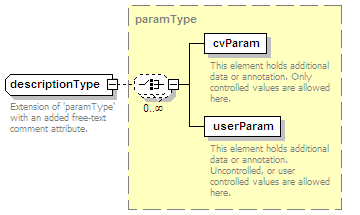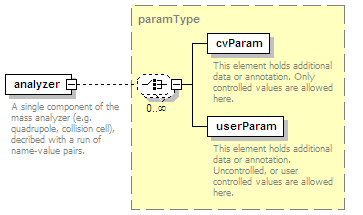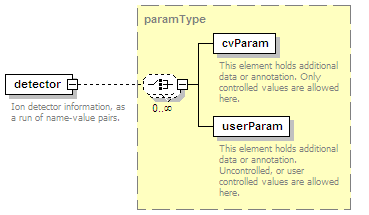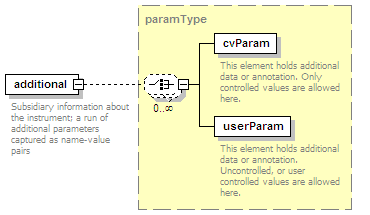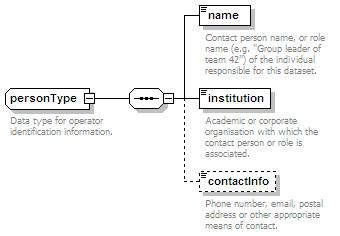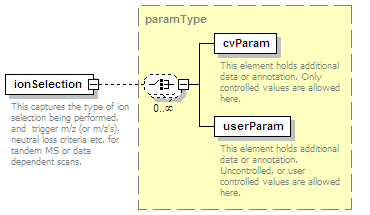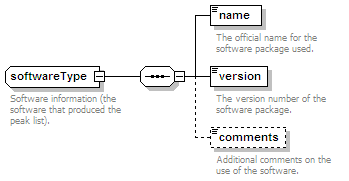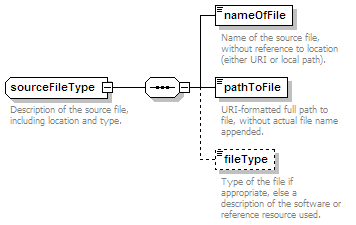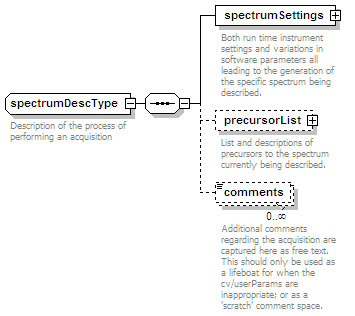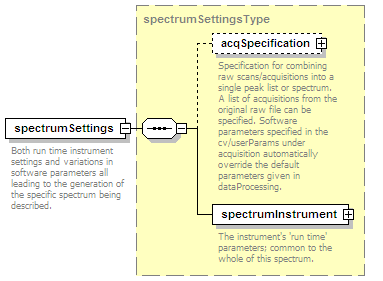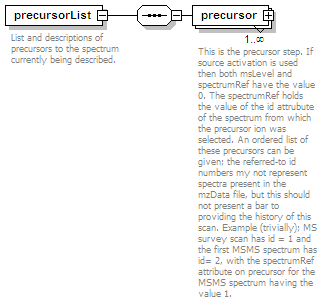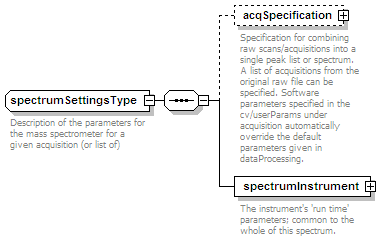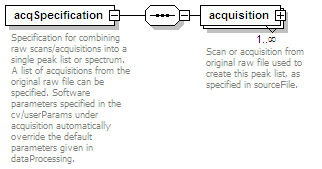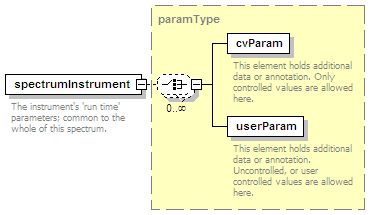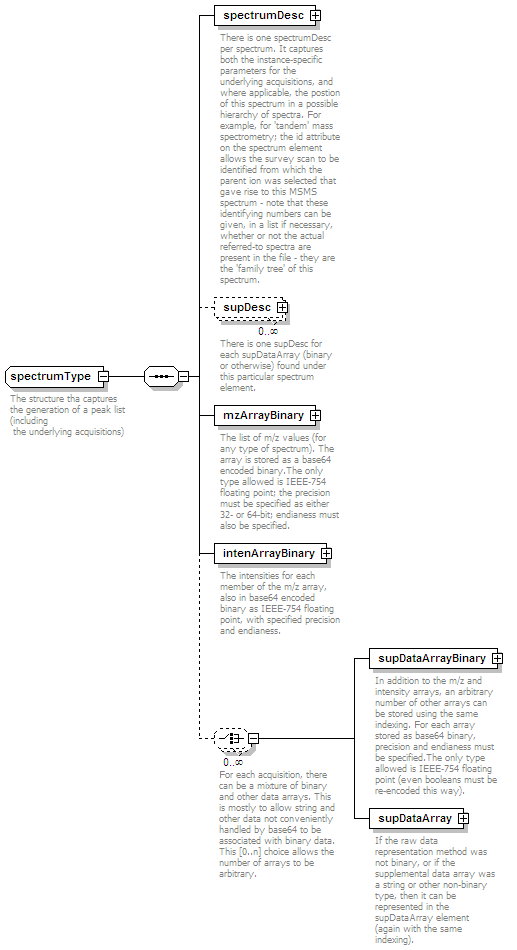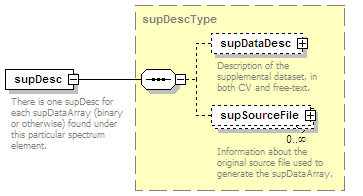| annotation |
| documentation | This schema can capture the use of a mass spectrometer, the data generated, and the initial processing of that data (to the level of the peak list). Peak lists are processed data from a mass spectrometry experiment. There can be multiple peak lists in an mzData file, which might be related via a separation, or just in sequence from an automated run. Any one peak list (mass spectrum) may also be composed of a number of acquisitions, which can be described individually herein. |
|
| source |
<xs:element name="mzData">
<xs:annotation>
<xs:documentation>This schema can capture the use of a mass spectrometer, the data generated, and the initial processing of that data (to the level of the peak list). Peak lists are processed data from a mass spectrometry experiment. There can be multiple peak lists in an mzData file, which might be related via a separation, or just in sequence from an automated run. Any one peak list (mass spectrum) may also be composed of a number of acquisitions, which can be described individually herein.</xs:documentation>
</xs:annotation>
<xs:complexType>
<xs:sequence>
<xs:element name="cvLookup" type="cvLookupType" minOccurs="0" maxOccurs="unbounded">
<xs:annotation>
<xs:documentation>This stores the location, name, version and a short, arbitrarily assigned in-file reference label, for one or more controlled vocabulary sources. Short labels are for use elsewhere in the data file, primarily in the cvLabel attribute, to indicate the use of a particular source for an item of controlled vocabulary.</xs:documentation>
</xs:annotation>
</xs:element>
<xs:element name="description">
<xs:annotation>
<xs:documentation>Each data set starts with a description section. This section captures 'general' information; such as the instrument on which the data were generated.</xs:documentation>
</xs:annotation>
<xs:complexType>
<xs:sequence>
<xs:element name="admin" type="adminType">
<xs:annotation>
<xs:documentation>Administrative information pertaining to the entire mzData file (i.e. not specific to any part of the data set) is stored here.</xs:documentation>
</xs:annotation>
</xs:element>
<xs:element name="instrument" type="instrumentDescriptionType">
<xs:annotation>
<xs:documentation>Instrument descripton (not 'run time' parameters, which should properly be captured in spectrumInstrument); these features must be common to all acquisitions.</xs:documentation>
</xs:annotation>
</xs:element>
<xs:element name="dataProcessing" type="dataProcessingType">
<xs:annotation>
<xs:documentation>Description of the default processing by which the peak list(s) were generated.</xs:documentation>
</xs:annotation>
</xs:element>
</xs:sequence>
</xs:complexType>
</xs:element>
<xs:element name="spectrumList">
<xs:annotation>
<xs:documentation>All mass spectra and the acquisitions underlying them are described and attached here. Subsidiary data arrays are also both described and attached here.</xs:documentation>
</xs:annotation>
<xs:complexType>
<xs:sequence>
<xs:element name="spectrum" maxOccurs="unbounded">
<xs:annotation>
<xs:documentation>This is an individual spectrum.The spectrum is considered to be composed of an array of acquisitions. There are two primary ways of representing data; base64 encoded binary (single or double precision) or arrays of simple data types. All arrays used to describe a single spectrum are the same length, with the same indexing.</xs:documentation>
</xs:annotation>
<xs:complexType>
<xs:complexContent>
<xs:extension base="spectrumType"/>
</xs:complexContent>
</xs:complexType>
</xs:element>
</xs:sequence>
<xs:attribute name="count" type="xs:int" use="required">
<xs:annotation>
<xs:documentation>The number of spectra that are to be found in the attached list.</xs:documentation>
</xs:annotation>
</xs:attribute>
</xs:complexType>
</xs:element>
</xs:sequence>
<xs:attribute name="version" type="xs:string" use="required" fixed="1.05">
<xs:annotation>
<xs:documentation>The development version of this mzData schema.</xs:documentation>
</xs:annotation>
</xs:attribute>
<xs:attribute name="accessionNumber" type="xs:string" use="required">
<xs:annotation>
<xs:documentation>The accession number assigned arbitrarily to a particular mzData instance (i.e. data) file, by the generator of that file. This accession number is intended to serve as a (locally) unique reference by which to identify a particular mzData instance file, and is not intended to be related to any other accession number, such as that for a particular entry in a reference database such as Uniprot, or the element sampleName under the admin branch of mzData.</xs:documentation>
</xs:annotation>
</xs:attribute>
</xs:complexType>
</xs:element> |

